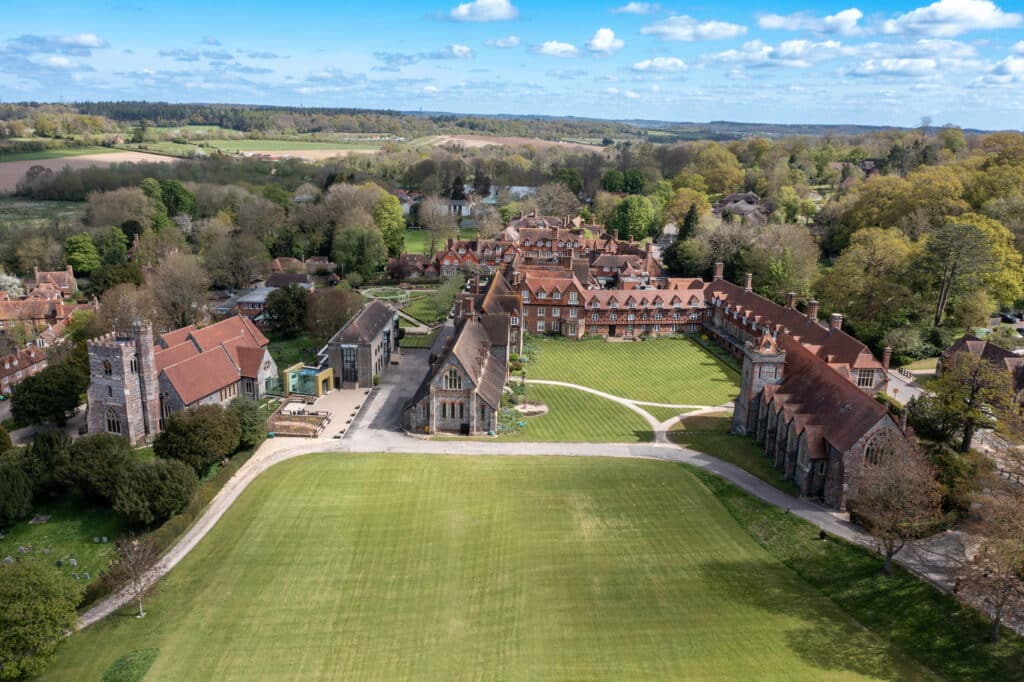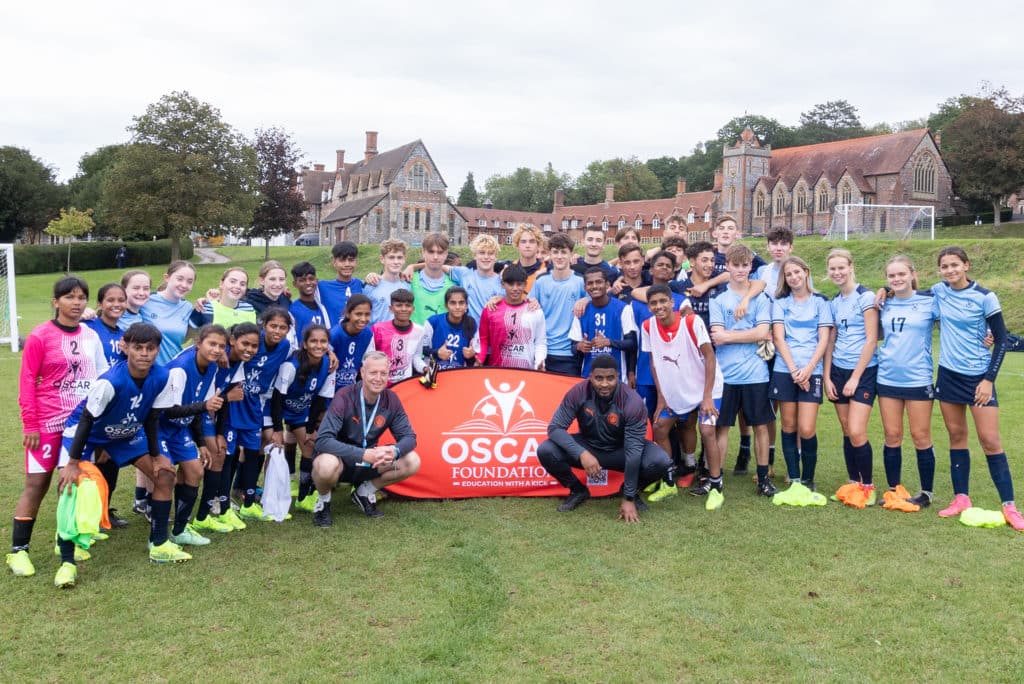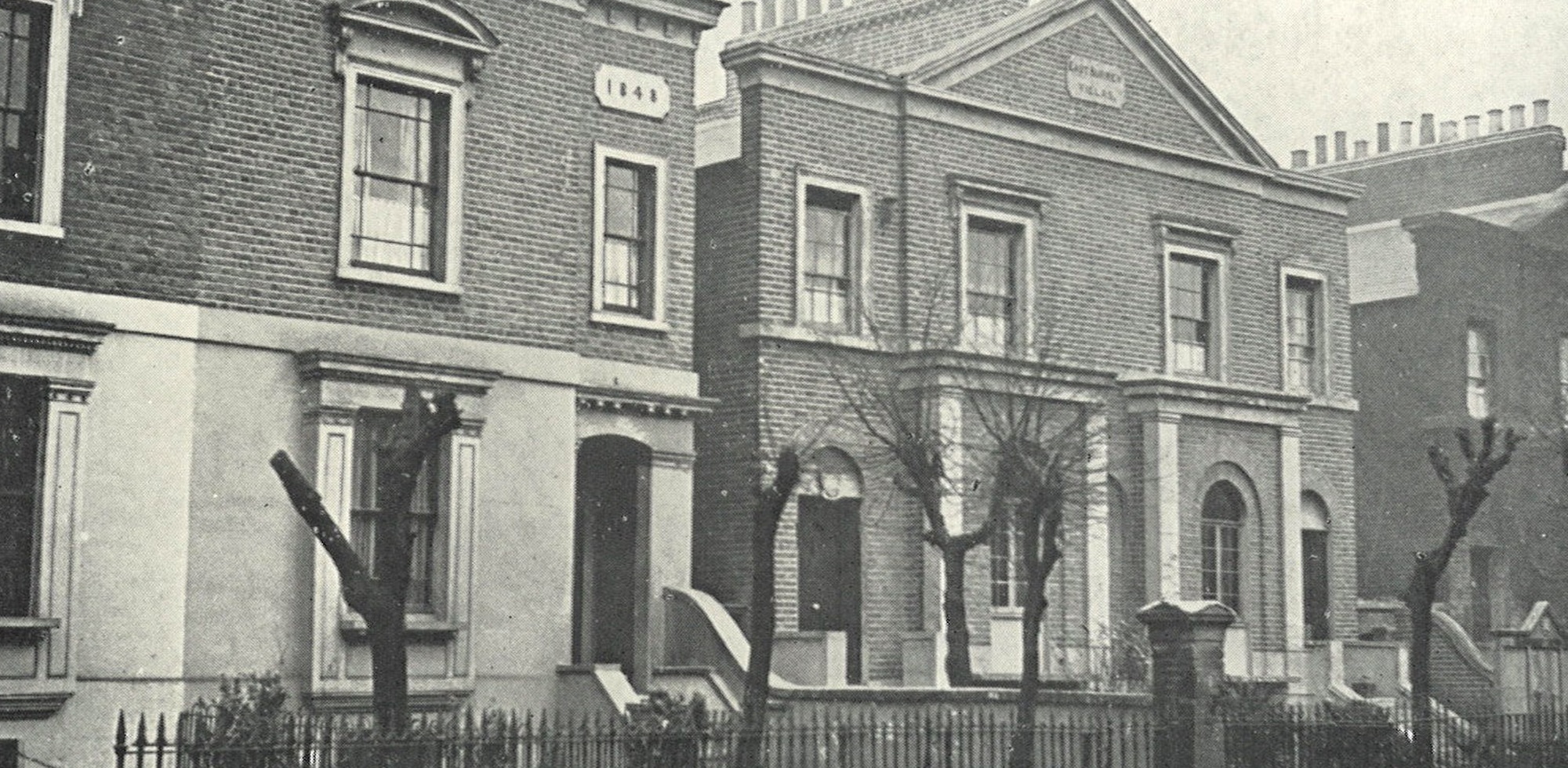
As The Bradfield Club today it helps Southwark’s young people to develop into healthy, wise, happy adults who become constructive forces in their communities.
As part of a wider movement among nineteenth-century British public schools to alleviate the plight of the urban poor and spread Christianity, in 1894 Bradfield founded a Home Mission in London. Initially it was based in the parish of St Chrysostom, Peckham. By 1912, under Headmaster Harold Costley-White, the school wished “to take a more active and personal part in the work” and adopted St Luke’s Working Lads’ Club, which became the Bradfield Mission Club. It still thrives today as The Bradfield Club with the support of the school among other partners.
The original club had been founded in 1906 by Richard Hayward, an officer in the Royal Naval Reserve, who carried on as Manager of the Bradfield Club. St Luke’s was a working-class parish with a population of approximately 13,000 and Hayward came to know it well: “You will find there model homes, and you will find others, membership of which alone is a bad start in life. And yet, as all lads are, the lads with the worst of homes are loveable and full of infinite possibilities.” The club provided a haven for boys of school age who “usually only have the streets to play in” and older boys and young men who had left school after the legal age of 14 to work, many as ‘van boys’ on horse-drawn vehicles or in neighbouring factories. Hayward reflected how “firmness tempered with kindness” and a “spirit of give and take” were essential to win their trust and respect.
The club’s principal sources of income were offertories from Bradfield, subscriptions and donations from Old Bradfieldians, and small contributions from the boys. It was based in two small semi-detached houses, the East Surrey Villas, 7 and 9 Commercial Road. The club rooms were “bright with pictures of Bradfield or photographs of the boys’ own summer camps.” A temporary corrugated iron building in the rear provided a gymnasium.
In achieving its aims of inspiring boys to become good Christians and responsible citizens, the Club’s first Warden, St Luke’s Vicar John Douglas, emphasised “the educative work of recreation – which is, perhaps, the greatest in its effects of comradeship, altruism and esprit de corps – the greatest of all social dynamics.” By learning to play games in the spirit of true sportsmanship, boys developed the important virtues of “courage, endurance, unselfishness, self-control and generosity.” By becoming involved in all these spheres, the staff, pupils and alumni of Bradfield played the role of exemplars.
There was no religious test for joining the club, but during its early years, it was closely associated with the Anglican Church and most of its staff were committed members. Club membership averaged between 200 and 400 with boys and young men divided in sections according to age which ran from ten to twenty years. Its activities took place on weekday evenings and on weekends. In the club rooms the boys played billiards, chess, draughts, dominoes or other games and a lending library was established to encourage reading. There was support for formal education and instruction in practical skills such as boot repairing and First Aid. Recreational classes were offered in painting, drawing, singing and simple country dances “which were enormously popular with the kiddies, who would otherwise have to play in dreary, dirty streets.”
Gymnastics, boxing and wrestling took place in the gymnasium which was also the venue for drama, concerts and entertainments such as lantern-slide displays. Cricket and football were made possible by the hiring of sports grounds and swimming took place in nearby public baths. Scouting thrived and the 42nd South London (Bradfield) Troop enjoyed a week each summer camping in the school fields. The club’s annual camps, held at several country venues, fostered its ethos of comradeship, moral development and character building. To help the young men to make their way in life, the club assisted in finding employment. It ran a jobs bureau and encouraged subscribers to connect club members with good office or factory situations.
The outbreak of the First World War dramatically affected the club. Reflecting the powerful influence of nationalism in contemporary Europe, a strong patriotic spirit had infused all its activities. This was encouraged by two of the club’s most charismatic leaders: Hayward and its gymnastics instructor Edward Clarke. Hayward was commissioned in the 22nd Battalion of the County of London Regiment (Territorial Army) in 1912 and served in its machine gun section. He encouraged club members to enlist and by 4 August 1914 “all the machine-gunners in my Battalion, except the NCOs were lads from the Bradfield Boys’ Club.” Clarke also joined the regiment, serving as its gymnastics instructor.
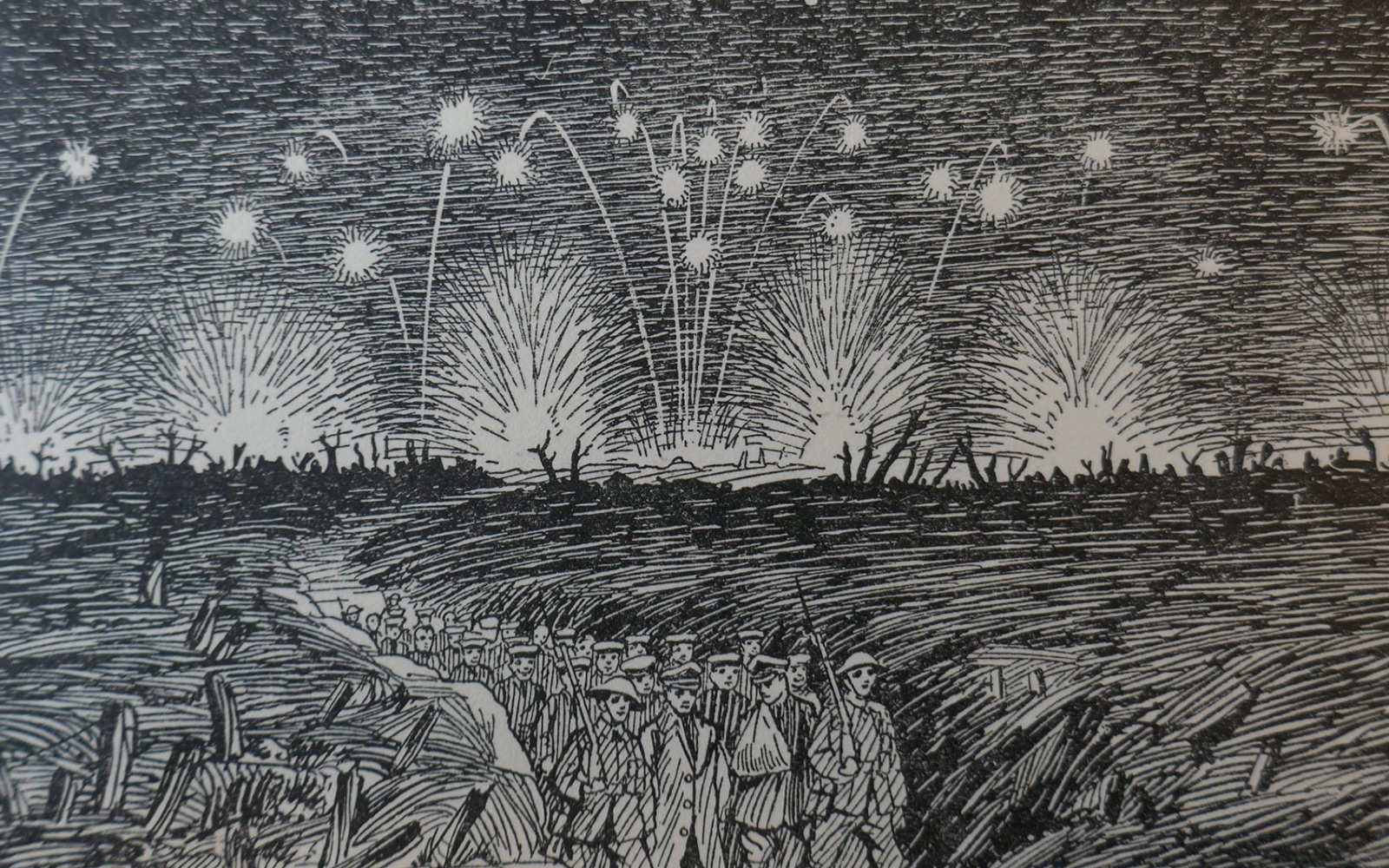
With the onset of war, Clarke and the club boys volunteered for overseas service with the 22nd Battalion and were deployed to Givenchy in April 1915. Almost immediately they raised a board above their trench inscribed ‘Play up Brads’. This expression of esprit de corps and courage was later adopted as a club motto. Other members of staff volunteered and more than 400 boys served in various branches of the armed forces during the conflict. Tragically, one of the first fatalities was Clarke, killed in May 1915 by an exploding shell while assisting a stretcher party. One of his former gym squad wrote that characteristically: “He died like a hero, helping the wounded.” At the end of the war, the club’s known fatalities numbered 74, although Douglas believed that the true figure was nearly 100.
In early 1915, Headmaster Robert Beloe wished to move the club to a location closer to Bradfield. After considering the possibility of maintaining two clubs, Beloe withdrew from Peckham and established a Boys’ Club at Bradfield, whose members initially were the Budgeons, the boys who cleaned the boots and served in Hall. The Peckham club carried on independently of the school, however, with the support of Old Bradfieldians, with an eventual change of name to the Old Bradfield Boys’ Mission Club in 1922.
The post-war years were challenging as the club struggled financially following separation from the school. It launched an appeal in 1926 to liquidate its debt and finance essential repairs to buildings. Several major events were organised in 1927 including a visit by Queen Mary who witnessed demonstrations of gymnastics and boxing. Several extremely generous donations helped the club to restore its finances, including one by the solicitor Edward Herbert, who was the father of five and grandfather of four Bradfieldians. In 1928 Herbert purchased 5 Commercial Road and presented it to the club as a memorial to his son Ronald, Old Bradfieldians and club members who had died during the First World War.
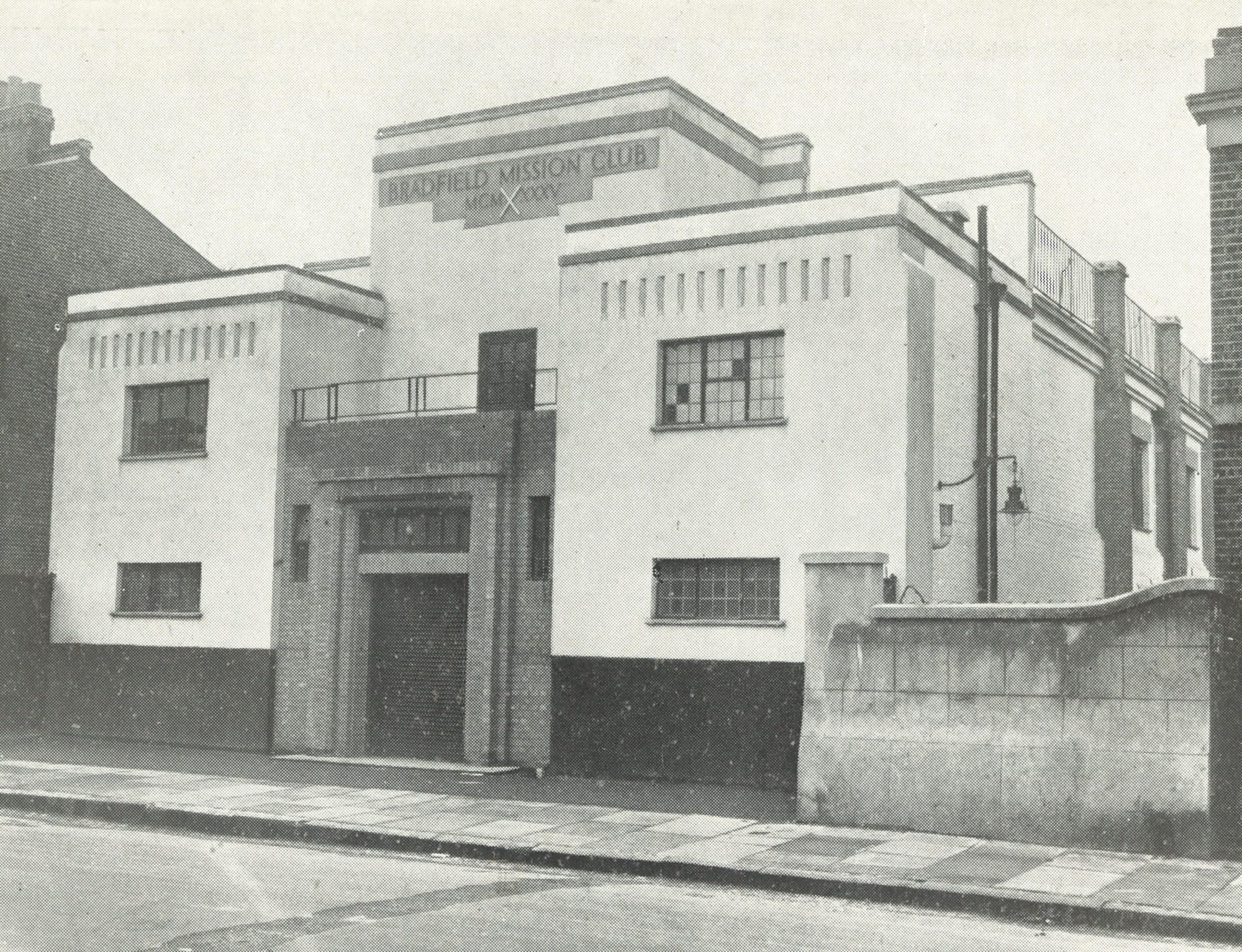
The most significant event of the post-war years was the renewal of a direct link with Bradfield following the departure of Beloe in 1928. The new Headmaster, Eric Whitworth, took on the club’s presidency, and it opened an exciting new chapter of life as the Bradfield Mission Club. Whitworth’s motives for re-establishing formal ties are unclear. There was speculation that he was concerned about the consequences of his predecessor’s plans for social work in the school’s neighbourhood, which would bring Bradfield’s boys in direct contact with local girls.
Whitworth’s determination to foster meaningful exchange between club and school was signalled by the resumption of regular visits. The first since 1915 occurred on 15 June 1929 when a party of thirty club boys spent a day at Bradfield.
They were given a tour of the school by pupils, swam in the outdoor pool and had lunch in the Hall. There were two cricket matches in the afternoon, then tea, followed by a display by the club’s gymnastics squad. From this time onwards, there was always at least one annual visit from the club to Bradfield and often more. In 1932, a party of Bradfield boys visited the club to attend its annual gymnastic and boxing display.
The club’s finances were bolstered by its renewed connection to the school. A new gymnasium opened in 1935, nicknamed Bradfield Hall by its neighbours because of its impressive size. It offered a great stimulus to boxing, gymnastics and scouting. Teachers, pupils and Old Bradfieldians assisted at the annual camps and cricket and football matches were organised between Old Bradfieldians and the club. There were constant appeals for help with running club activities to those “who by their birth and education have so much to give and not a little to gain.”
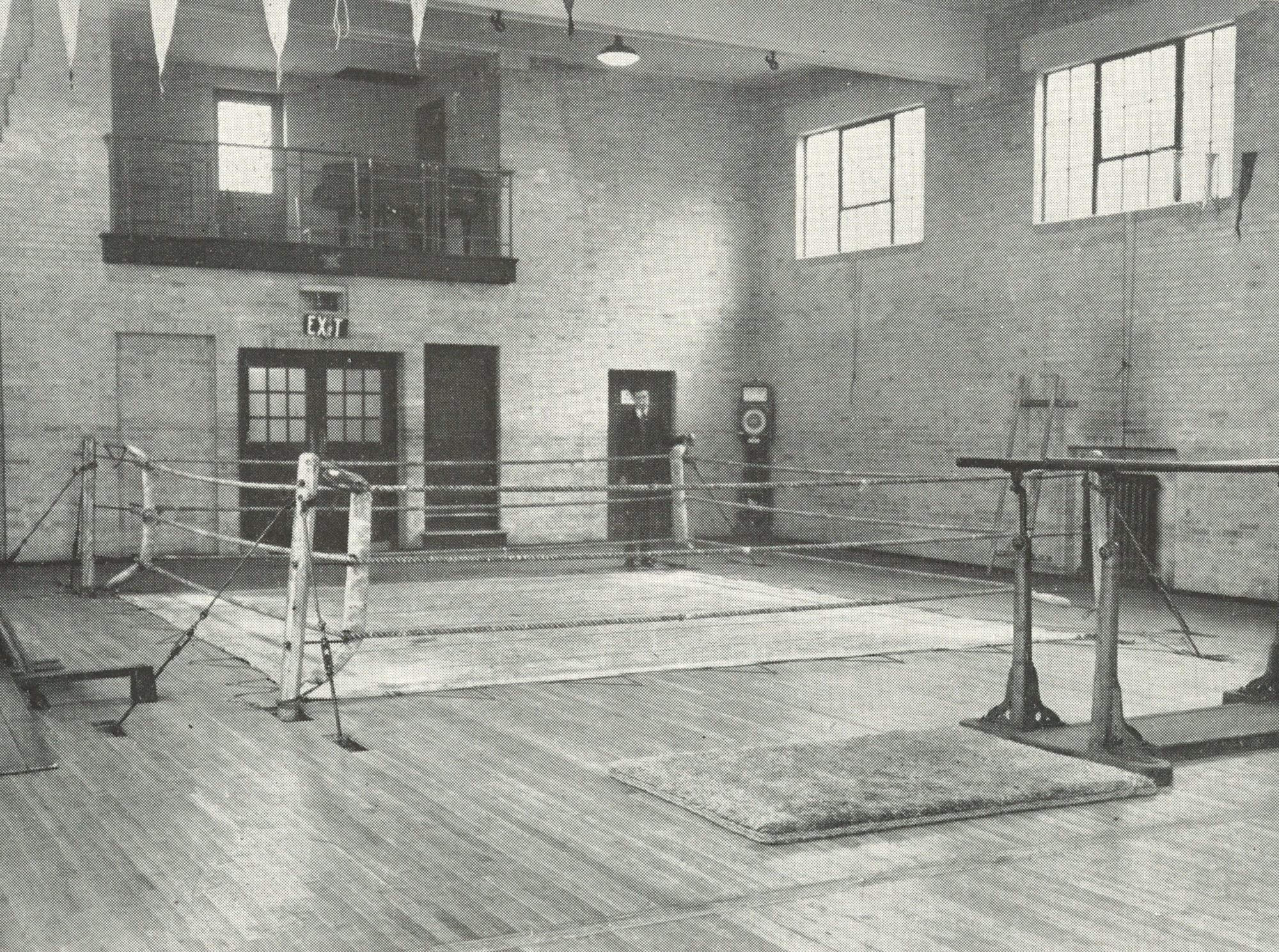
The flourishing club celebrated its Silver Jubilee in 1937. Close connections between staff and boys had been great sources of strength and stability. That the many opportunities offered by the club had positively touched the lives of Peckham’s boys and young men is suggested by its Old Boys who came forward during the 1930s to mentor the next generation. Four former club boys became coaches of gymnastics and boxing. An Old Brads Association, composed of members from the First World War era, was formed to renew old friendships and support the current club. It met weekly and hosted reunion dinners and fund- raising drives.
The club survived another period of struggle during the Second World War, when St Luke’s Church was destroyed in the Blitz and its battered gymnasium became the site of parish services. Once restored, however, the club’s link with Bradfield College would never be broken. Since 1937 it has grown and adapted with the changing needs of the school and of Southwark. As The Bradfield Club today it helps Southwark’s young people to develop into healthy, wise, happy adults who become constructive forces in their communities.
Find out more about The Bradfield Club in Peckham
A longer version of this article forms part of a recently published book, Bright the Vision: Public School Missions from the Victorian Age, ed. Malcom Tozer, 2023.

